Here’s a link to the 0.806ct HVS2 A Cut Above that I will be analyzing. If you wish you can have the diamond details, images, video, and lab reports open so you can follow along with my analysis.
Brightness
First let’s open up the AGSL lab report and take a look at the proportions diagram.
This diamond has a 34.6 degree crown angle which is very close to what’s considered the best (34.5) so this diamond pretty much has an ideal crown angle.
The pavilion angle is 40.8 which is within the ideal range as well so on paper the crown and pavilion angles are ideal. However, if we go take a look at the actual image of the diamond, I can tell from the actual image that the light return is slightly weaker underneath the table facet. The reason for this is is because the pavilion angle is probably higher than 40.80 and the the lower girdle angle is also on the steep side having a 76% length.
Let’s check the ASET image from Whiteflash and yes, you can tell the slightly weaker light return on the ASET with some faint green areas between the arrow shafts. We want the area under the table facet to be bright because that’s what draws your attention immediately.
Now I want to determine whether the diamond has edge-to-edge light performance. To do that I will evaluate the upper girdle facets to see if they are bright.
This diamond is bright at the edges because despite having steeper star facets, the upper girdles are not too steep and neither have they been painted to achieve a shallower effect. Overall, I can say that this diamond does achieve edge-to-edge light performance with only slightly weaker light return under the table.
Fire
In order to assess how much fire the diamond is likely to produce, we have to take a look at the crown height so go back to the lab report. Having a 14.8% crown height and an ideal table percentage of 57% means that you’re getting a crown height and angle combination that will produce a good amount of fire in the diamond under direct lighting. The ideal crown height in almost any diamond shape is 15% and anything higher usually gives you a bonus amount of fire.
Sparkle
This diamond has excellent optical symmetry with all 8 hearts the same size and shape with negligible clefs in the hearts. A 76% lower girdle length makes it harder for a cutter to produce a hearts and arrows diamond but when they get it right as in this diamond then the tolerances are actually much tighter than in a diamond with longer lower girdles.
Spread
This diamond has a 1.065 weight ratio which is outside my recommended range. I was surprised at this result initially because the proportions themselves do not seem overly steep or deep. However, taking a closer look reveals a thin to slightly thick girdle that is most likely the culprit here since I noted no painting or digging in the diamond.
L/W Ratio
Having a 1.0067 L/W ratio means this diamond is round with only a 0.04mm difference between maximum and minimum measured diameter.
Clarity
Grade setting inclusion: Cloud
Clarity related comments: Additional clouds not shown
Clouds are white inclusions and they are isolated to a small area in this diamond. The cloud inclusions do not impact the transparency of the diamond. The other inclusions are feather and crystal inclusions that are insignificant.
This diamond meets Whiteflash’s definition of eye-clean as well as my definition of completely eye-clean. Based on my experience I would not expect any person with normal vision to be able to make out any inclusions or their effects in this high VS2.
Color
I have not assessed color in this diamond. Color assessment is impossible with a diamond face up against a dark background. If you are currently interested in purchasing this diamond and would like a color assessment then I can guide you through this.
Computer simulated ASET
There are scanning errors in both the hearts and arrows ASET including the hotspots at the base of the arrows and several skewed Vs and hearts that are not present in the actual diamond.
Overall
This diamond has good light performance and excellent clarity for a VS2. Normally the weight ratio would be just over what I like to see but I would never reject a diamond that misses narrowly on the weight ratio alone especially because I have identified the cause to be just a slightly thick girdle.
I would buy this diamond if other options had poorer clarity even if they had slightly better spread. However, if there was another high VS2 that had even better light performance and spread then I would have to pass on this one.
For more information about Whiteflash please check out my full review of Whiteflash here.
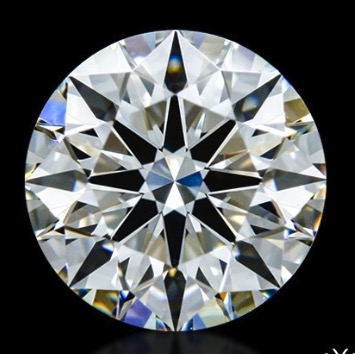
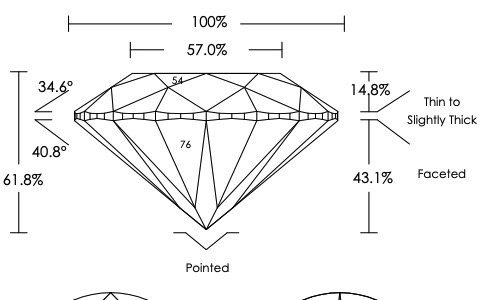
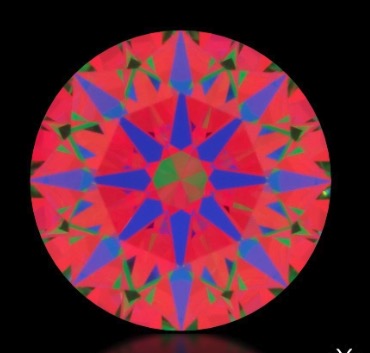
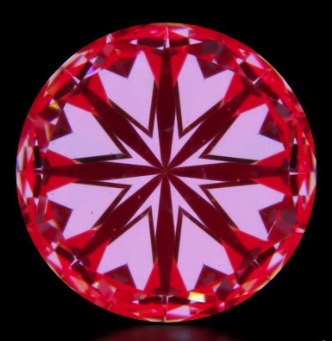
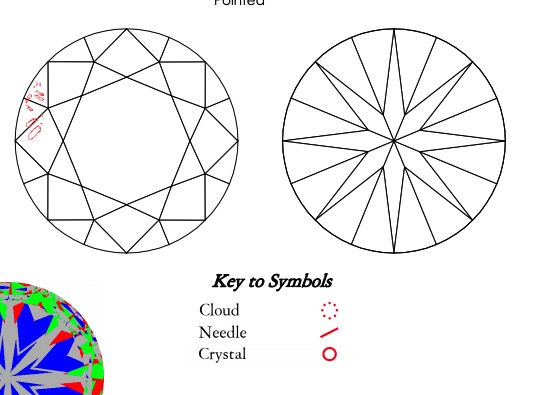
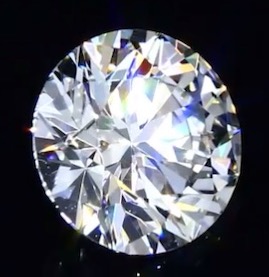
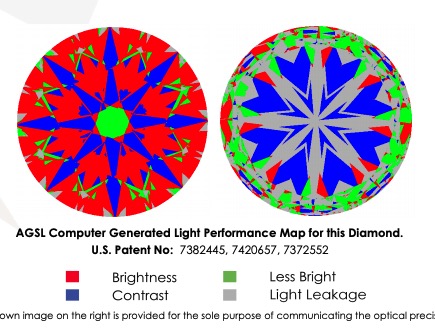
Leave a Reply